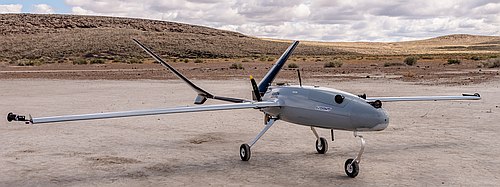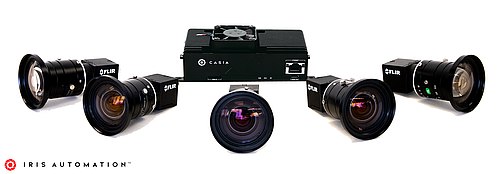Podcast: Play in new window | Download (Duration: 41:13 — 28.3MB)
An interview with Great Lakes Drone Company, producers of drone light shows. Also, first responders and augmented reality controlled UAVs, drones that locate trash, Wing drone delivery expansion plans, QR codes in the nighttime sky, and a drone that launches a drone.
Guests
We talk with Ashley Munson and Lindsay Nitz from Great Lakes Drone Company about producing drone light shows. Recorded at the 2021 Sun ‘n Fun Aerospace Expo on April 17, 2021.
UAV News
New Headsets Let Police Control Drone Swarms ‘Hands Free’
Researchers want to support firefighters in Montréal during fire-related emergencies. Their solution is a swarm of drones and an augmented reality headset. They designed an AR interface using the Magic Leap 1 headset that can manage the UAVs in stressful situations.
Drones for the Environment: Battling Trash in San Francisco Estuaries
California researchers are using imagery from unmodified DJI Mavic 2 Pro drones and AI to find plastics and trash along the banks of creeks and streams. The idea is to collect the rubbish before it washes into the bay or the ocean.
Alphabet unit Wing seeks FAA OK to help expand U.S. drone operations
Wing wants to grow its drone delivery service beyond the Christiansburg, Virginia residents that are now supported. Wing is petitioning the FAA to consolidate remote pilot operations from local facilities “to regional operations facilities that are capable of safely controlling a larger number of aircraft simultaneously.” They also want to use a derivative version of the drones and change the operator line check requirement to every 12 months instead of every three months. The FAA says they’ll accept public comments on the petition before making a decision.
The future of advertising is here, and it’s a giant QR code formed by drones flying over Shanghai
Chinese video sharing and streaming site Bilibili created a large nighttime drone display that included a QR code in the sky using 1,500 drones. This was part of a light show celebrating a video game anniversary. Bilibili posted a video with the entire performance:
Video: Princess Connect! Re:Dive drone show
Valkyrie drone launches even smaller drone from inside payload bay
A Kratos XQ-58A Valkyrie experimental “attritable” drone successfully released an ALTIUS-600 autonomous drone. The ALTIUS-600 is a small tube-launched drone made by Area-I and it was released from the Valkyrie internal weapons bay. The XQ-58A Valkyrie is designed and built by Kratos for the USAF Low-Cost Attritable Strike Demonstrator program. The ALTIUS-600 is part of the ALTIUS family of autonomous UAS that can be launched from the air, sea, and ground from systems like the Common Launch Tube (CLT), Pneumatically Integrated Launch System (PILS), and other launch systems.





